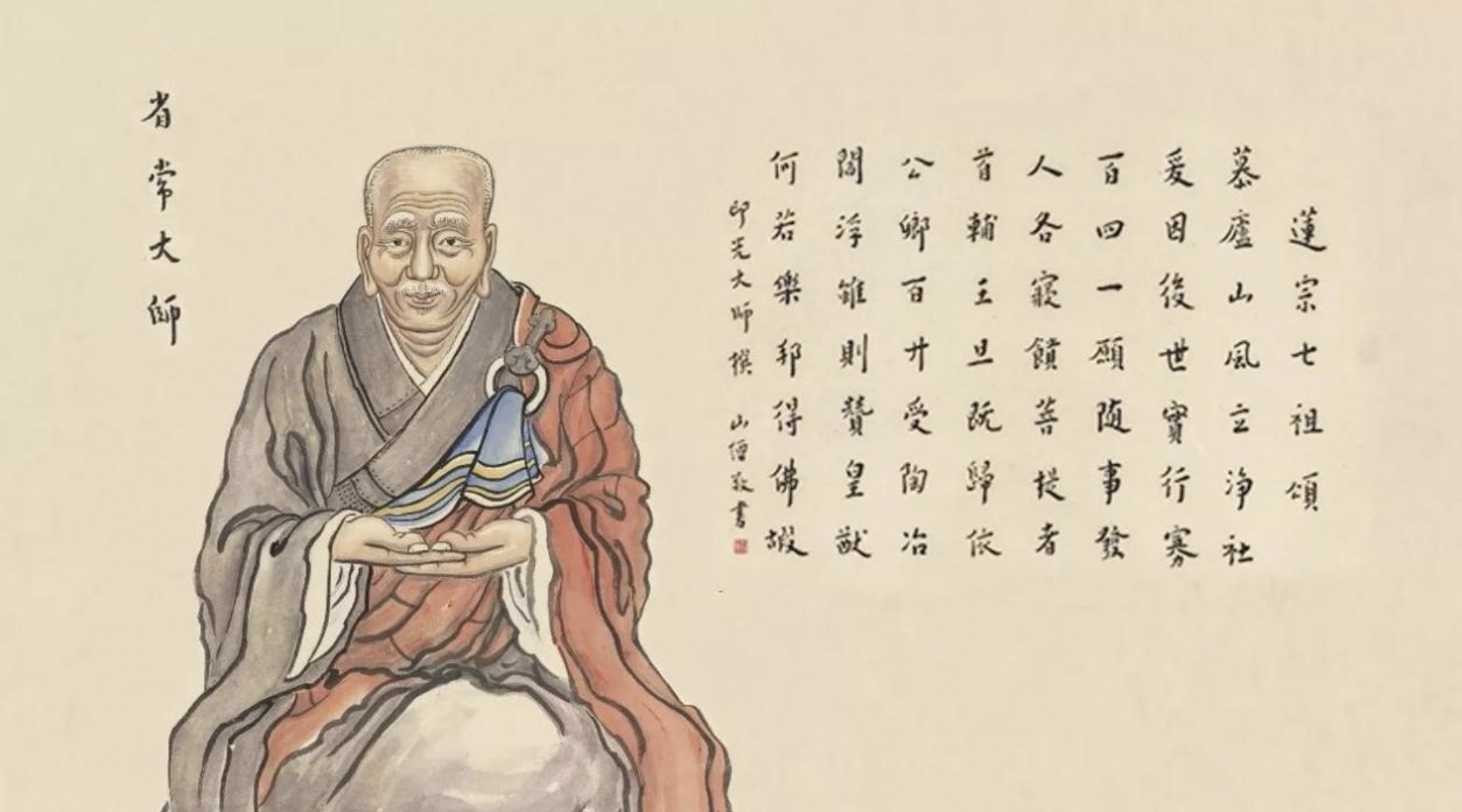7th Patriarch Great Master Xingchang 七祖省常大师
Great Master Xingchang was born during the Five Dynasties' era's later Zhou Dynasty's Xiande sixth year (959 C.E.), in a Yan family at Zhejiang Qiantang (present day Zhejiang Province, Hangzhou City). Great Master was intelligent and possessed innate talents. At the age of seven, during the Northern Song Dynasty's Gande third year (965 C.E.), he was sent to a monastery by his parents to renounce the household life. After ten years of experience living as a sramaṇera (novice monk), at the age of 17, he gave rose to the aspiration, to request receiving of the full monastic precepts.
After receiving the full precepts, Great Master was diligent in practice and strict in upholding the precepts. He was wholehearted in studying Mahayana treatises, also deeply practicing the Samatha and Vipassana (Cessation and Contemplation) Dharma Door of Tiantai tradition, with much insight on Buddhist doctrines. At that time, Great Master felt deeply connected to the Pure Land Dharma Door. He greatly admired Great Master Huiyuan's (The First Patriarch Of The Pure Land Tradition) model example of gathering the masses and forming a society at Mount Lu for practicing mindfulness of Buddha. Thus, during the Song Dynasty's Chunhua years (991-994 C.E.), at Hangzhou's Zhaoqing Monastery, he started his focused cultivation of the Pure Land path, while gathering knowledgeable and virtuous ones to form a society to practice mindfulness of Buddha.
The Great Master formed the society with the current dynasty's Chancellor (Prime Minister) Wang Wenzheng as the leader of the laypeople. Many scholar-officials from the court came to participate in the meetings, to eagerly compose poems and write odes. Together, they praised the most excellent causes and conditions of such gatherings. There were together, assemblies with about ten thousand monastics, laypeople and others. If a member is reborn, a replacement would fill the vacancy immediately. As formation of the society was based upon the Avatamsaka (Flower Adornment) Sutra's Chapter On Pure Practices* for practice, with the mindfulness of Buddha as refuge, the society was named Pure Practices Society, and all its members called themselves Disciples Of Pure Practices.
During this period, Great Master wrote the Avatamsaka Sutra's Chapter On Pure Practices with his pricked finger's blood (to express his devotion to its teachings). With every one written character, he would prostrate thrice, circumambulate thrice and recite the Buddha's name thrice. He also carved a statue of Amitabha Buddha with sandalwood. After completion, Great Master led the great assembly to kneel and vow, 'I, with this great assembly, from today onwards, give rise to Bodhicitta, and to the extreme limit of the future, will practice Bodhisattva practices. We vow to, at the end of this retribution body, with these be born in the Land Of Peaceful Nurturing.'
In the history of Buddhism, there are very few records about the Great Master's life and deeds. However, this does not at all affect later generations' Pure Land practitioners' reverence for him, also not changing his sublime status in the mind of devotees. Without a doubt, Great Master Xingchang, succeeding Great Master Yongming Yanshou, was one of the most capable propagators of the Pure Land teachings, whose achievements in Pure Land teaching received the world's affirmation.
Great Master did not leave any written work for the world. Historical records of his verbal teachings for delivering sentient beings are also rarely seen. Having said so, however, from the Great Master's practices, it can be seen that his thought on Buddhism, especially that on the Pure Land tradition, was with very original insights. With the Avatamsaka Sutra's Chapter On Pure Practices as the theoretical basis for practicing mindfulness of Buddha, this is how Great Master integrated his observation of contemporary climate within the Buddhist community, with that outside, to attract the Pure Land Dharma Door's three roots, to universally cover them. With both the sharp and dull completely gathered as an advantage, thus did he achieve such pioneering results.
During Song Dynasty's Tianxi's fourth year, on the first lunar month's 12th day (1020 C.E.), Great Master was sitting upright in the monastery, reciting the Buddha's name. Shortly thereafter, everyone heard his stern voice calling loudly, '[Amitabha] Buddha has come!' All present saw the ground completely transform to gold, lasting for a long time before fading off. At this moment, Great Master had already quietly departed. He was then 62 years old, with 55 years of monastic ordination, and 45 years of receiving the full monastic precepts. His disciples and others paid tribute by constructing a pagoda for his whole body, just beside Chan Master Naoke's pagoda. Great Master was then named Dharma Master Yuanjing (which means Complete Purity), and was also conferred by later generations as the Seventh Patriarch Of The Pure Land Tradition.




